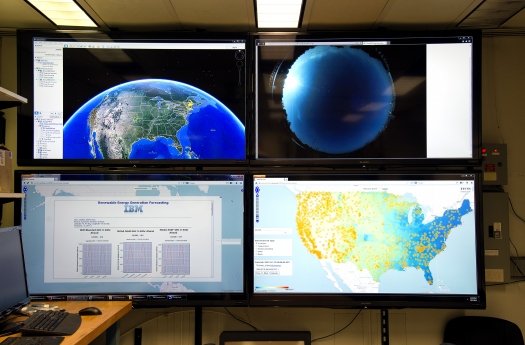Major disruption to the electricity sector is on the cards as governments ramp up renewables and transition away from fossil fuels.
As the energy industry continues to utilize more variable generation sources, accurate forecasts of power generation and net load are becoming essential to maintain system reliability, minimize carbon emissions and maximize renewable energy resources.

As we move into the Fourth Industrial Revolution, grid operators, developers and consumers are harnessing artificial intelligence (AI), paving a path for a smooth transition to a greater use of renewables.
AI’s ability to provide better prediction capabilities is enabling improved demand forecasting and asset management, while its automation capability is driving operational excellence – leading, in turn, to competitive advantage and cost-savings for stakeholders.

Before harnessing artificial intelligence, most forecasting techniques relied on individual weather models that offered a narrow view of the variables that affect the availability of renewable energy.
Now, artificial intelligence programs have been developed – such as IBM’s program for the US Department of Energy’s SunShot Initiative – which combine self-learning weather models, datasets of historical weather data, real-time measurement from local weather stations, sensor networks and cloud information derived from satellite imagery and sky cameras.

The result has been a 30% improvement in accuracy in solar forecasting, leading to gains on multiple fronts.
Forecasts of the base variables – wind speed and global horizontal irradiance, as well as the resulting power output – allows for a view on a range of time horizons, from minutes and hours ahead (for maintaining grid stability and dispatching resources) to day-ahead (optimizing plant availability), to several days ahead (scheduling maintenance).

With increasingly larger data sets becoming available, predictions can now go far beyond the weather to train algorithms to predict more remarkable outcomes.
Artificial Intelligence is revolutionizing the renewables industry, with improved demand forecasting, superior asset management, and operational excellence through automation.
As the low-carbon transition gains pace, AI’s ability to seamlessly integrate an enormous increase of intermittent renewable energy will be needed to ensure a stable and reliable grid.
Reference -E&Y Report, Forbes, The Guardian, Economic Times






